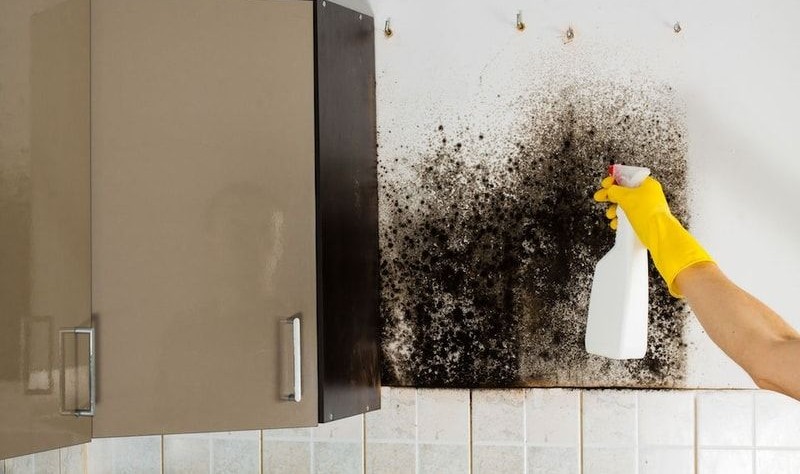
How Much Does Mold Remediation Cost in Arlington, TX?
The cost of mold remediation in Arlington, TX can vary significantly depending on the size of the affected area, the extent of the mold infestation, and the type of mold being removed. On average, homeowners can expect to pay between $500 and $6,000 for mold remediation, with smaller jobs on the lower end of the scale and more severe infestations costing significantly more.
Here’s a general breakdown of mold remediation costs based on the size of the affected area:
| Size of Area | Cost Range |
|---|---|
| Small Area (Less Than 10 Square Feet) | $500 – $1,500 |
| Medium Area (10-100 Square Feet) | $1,500 – $3,500 |
| Large Area (100+ Square Feet) | $3,500 – $6,000+ |
The cost of mold remediation can increase if the mold has spread behind walls, into HVAC systems, or if the property has sustained water damage that requires additional repairs. For severe cases involving structural damage, costs can exceed $10,000.
Factors That Influence Mold Remediation Costs

The cost of mold remediation is influenced by several factors, including:
1. Size of the Affected Area
The larger the area affected by mold, the higher the cost of remediation. Larger infestations require more labor, equipment, and materials to remove the mold and restore the affected space.
2. Type of Mold
Different types of mold can require different remediation methods. For example, black mold (Stachybotrys), which is considered toxic, often requires more specialized treatments than common household molds like Penicillium or Aspergillus. Mold testing can determine the type of mold present and help guide the remediation process.
3. Location of Mold
Mold that is easily accessible, such as on walls or ceilings, is generally easier and cheaper to remove. However, mold that has spread into areas like attics, basements, crawl spaces, or behind walls will require more extensive work, driving up the cost.
4. Water Damage Repairs
If the mold growth is a result of water damage, additional repairs may be needed to fix the source of the moisture. This could include repairing leaking pipes, fixing a damaged roof, or replacing water-damaged drywall, all of which can add to the overall cost.
5. Professional vs. DIY Mold Removal
While it’s possible to tackle small mold issues yourself, larger infestations should always be handled by professionals to ensure safe and thorough removal. Professional mold remediation companies use specialized equipment and techniques to contain and eliminate mold, reducing the risk of recurrence. If you attempt a DIY mold removal but miss hidden mold or don’t address the moisture issue, it can lead to bigger, costlier problems down the road.
For more information on factors affecting mold remediation costs, check out this Bob Vila guide on mold removal costs.
The Mold Remediation Process

Wondering what mold remediation involves? Here’s a step-by-step look at how professional mold remediation companies like Citywide Mold Mitigation handle the process:
| Step | Description |
|---|---|
| 1. Mold Inspection and Testing | The first step in mold remediation is identifying the extent of the mold problem. Mold inspectors will visually inspect the property and may take air or surface samples for testing to determine the type of mold and its concentration. |
| 2. Containment | Once the mold is located, the area is sealed off to prevent mold spores from spreading to other parts of the house. This may involve the use of plastic sheeting, negative air pressure, and HEPA filtration systems. |
| 3. Mold Removal | After the area is contained, the mold is physically removed from surfaces. This may involve scrubbing, sanding, or using chemical treatments to kill and remove the mold. In some cases, materials like drywall, insulation, or carpeting may need to be removed and replaced if they are too damaged by mold. |
| 4. Cleaning and Disinfecting | All affected surfaces are thoroughly cleaned and disinfected to remove any remaining mold spores. Professional mold remediation companies use specialized cleaners and disinfectants to ensure the area is safe and mold-free. |
| 5. Restoration | Once the mold is removed, the area is restored to its original condition. This may include repairing drywall, repainting, or replacing flooring and insulation. |
| 6. Prevention | The final step is addressing the source of the moisture that caused the mold to grow in the first place. This could involve repairing leaks, improving ventilation, or installing dehumidifiers to prevent future mold problems. |
Is Mold Remediation Covered by Insurance?
Whether or not mold remediation is covered by homeowners insurance depends on the cause of the mold. In most cases, insurance policies will cover mold remediation if the mold was caused by a “covered peril,” such as a burst pipe or roof leak. However, mold resulting from neglect, poor maintenance, or long-term issues is typically not covered.
If you’re dealing with mold in your home, it’s a good idea to review your insurance policy and contact your provider to see if mold remediation is covered. For additional details on mold coverage, visit the Insurance Information Institute.
When to Call Citywide Mold Mitigation for Help

If you’re facing mold issues in your Arlington, TX home, it’s important to act quickly. Mold can spread rapidly and cause significant damage to your property and your health if not properly addressed. Citywide Mold Mitigation offers expert mold inspection, removal, and remediation services to ensure your home is mold-free and safe. Contact us today for a consultation and to get an accurate estimate for mold remediation costs in Arlington.
FAQ
| Question | Answer |
|---|---|
| How much does mold remediation cost in Arlington, TX? | The cost of mold remediation in Arlington, TX typically ranges from $500 to $6,000, depending on the size of the affected area and the severity of the infestation. Larger jobs or severe mold issues can exceed $10,000. |
| What factors affect mold remediation costs? | Factors that influence mold remediation costs include the size of the affected area, the type of mold, the location of the mold, the extent of water damage, and whether you choose professional remediation or a DIY approach. |
| Is mold removal covered by homeowners insurance? | In many cases, mold remediation is covered by homeowners insurance if the mold was caused by a covered event, such as a burst pipe. However, mold caused by neglect or long-term water damage is typically not covered. |
| How long does mold remediation take? | The time it takes to complete mold remediation depends on the size of the infestation. Small jobs can be completed in a day, while larger areas of mold may take several days to remove and restore. |
| When should I call a professional for mold remediation? | If you have a mold infestation larger than 10 square feet, or if the mold is in hard-to-reach areas like behind walls or in HVAC systems, it’s best to call a professional mold remediation service like Citywide Mold Mitigation. |
If you need mold remediation services in Arlington, TX, contact Citywide Mold Mitigation today for expert help with mold removal and prevention.

